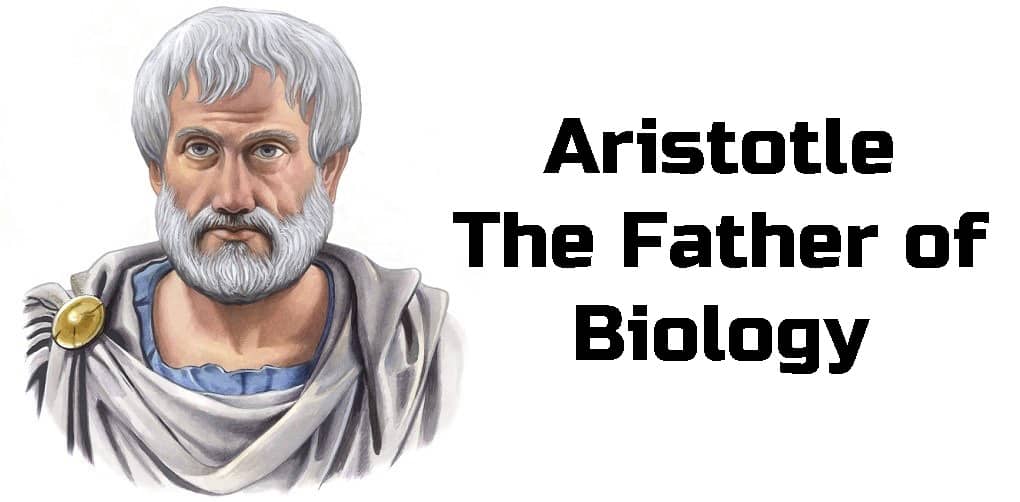Aristotle is said to be the father of Biology mainly due to his approach in the study of the field.
The following module attempts to explore the reason behind the aforementioned statement and his contribution to the branch of biology.
What is biology?
The word biology is derived from the Greek words “bios” which means “life” and “logos” which means “study”. Thus, it is defined as the science of life and living organisms.
According to the dictionary, Biology is “the study of living organisms, divided into many specialized fields that cover their morphology, physiology, anatomy, behaviour, origin, and distribution.”
Who was Aristotle?

Aristotle was a Greek philosopher and a polymath. He is said to have lived during the fourth century BCE (Before Common Era) between 384 to 322 BCE.
He has contributed to several branches of science as well as arts, including biology, botany, history, logic, metaphysics, philosophy, physics, poetics, political science, and psychology.
He is also often believed to be the founder of western Logic, Biology, and Zoology.
Aristotle was born in Stagira, Macedonia, Northern Greece. After his father passed away he moved to Athens and joined the Academy of Plato.
He stayed and studied under Plato for about 20 years. Soon after the mentor’s death in 348 BCE, Aristotle, once again, moved out of Athens to Assus (present-day Turkey).
During the same period he also often lived in the city of Mytilene on the island of Lesbos. There, he carried out several extensive scientific research in the field of zoology and marine biology.
These researches are summarised in the book titled “The history of animals” in which Aristotle added two short accounts namely “On parts of Animals”; and “On the generation of animals”.
Aristotle also divided the Sciences into three types namely, productive sciences, practical sciences, and theoretical sciences.
In productive science, he included only engineering and architecture as these were the only branches of science, according to him, that produced something such as buildings bridges, etc.
In theoretical science, Aristotle included physics, mathematics, and theology arguing that these subjects have no practical goal but are pursued out of personal interest.
Under practical science, he included ethics and politics as he believed that these branches guide our behaviour and actions.
Aristotle: The father of Biology
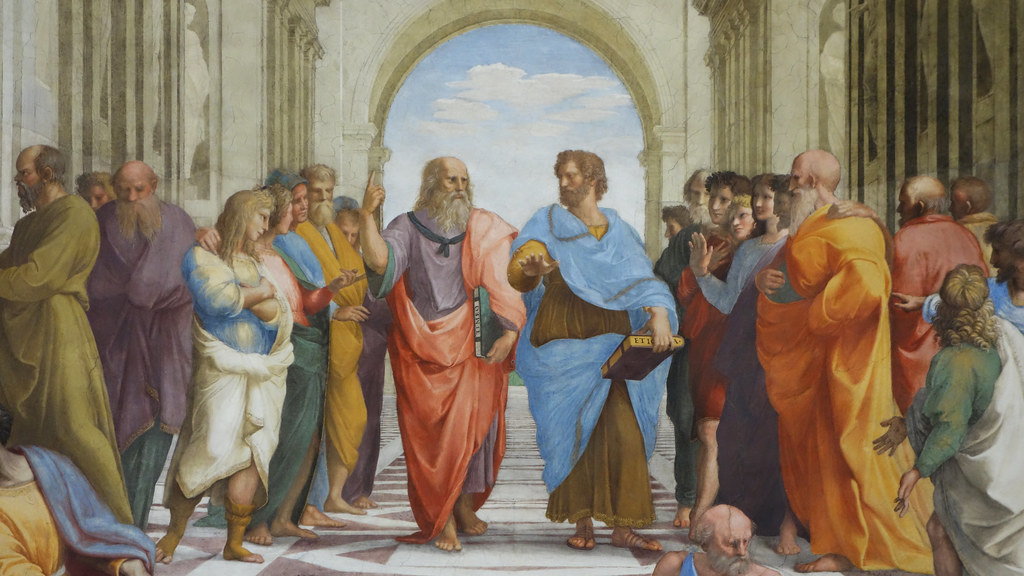
Aristotle is regarded as the father of biology.
Even though he wasn’t the first philosopher to write on the topic of natural philosophies, the origin of living things, and the descriptions of organisms.
There are philosophers who had written on the various topics of biology and life sciences as well, such as, the works of Anaximandier, Plato, Hippocrates, and Theophrastus.
But Aristotle is credited for the development of this branch of science due to his approach of systematic critical empiricism.
To be more specific Aristotle carried out his research in the field of Zoology and Marine biology which has emerged as one of the earliest studies of the natural world using a systematic and empirical approach to define and record the scientific natural history of the living organisms.
Thus, we can say that Aristotle’s study of biology is, for the most part, grounded in the systematic observation and collection of zoological and marine data.
Most of his observations were documented during his stay on the island of Lesbos. This in turn also encouraged his writings on the Marine biology of the Pyrrha lagoon.
He did not perform experiments in the modern sense, but made observations of living animals and carried out dissections.
He names some 500 species of bird, mammal, and fish; and he distinguished a variety of insects and other invertebrates. He described the internal anatomy of several animals including birds.
His theory was based on his concept of forms which describes five major biological processes:
- Metabolism
- Temperature
- Regulation
- Information processing
- Embryogenesis and inheritance.
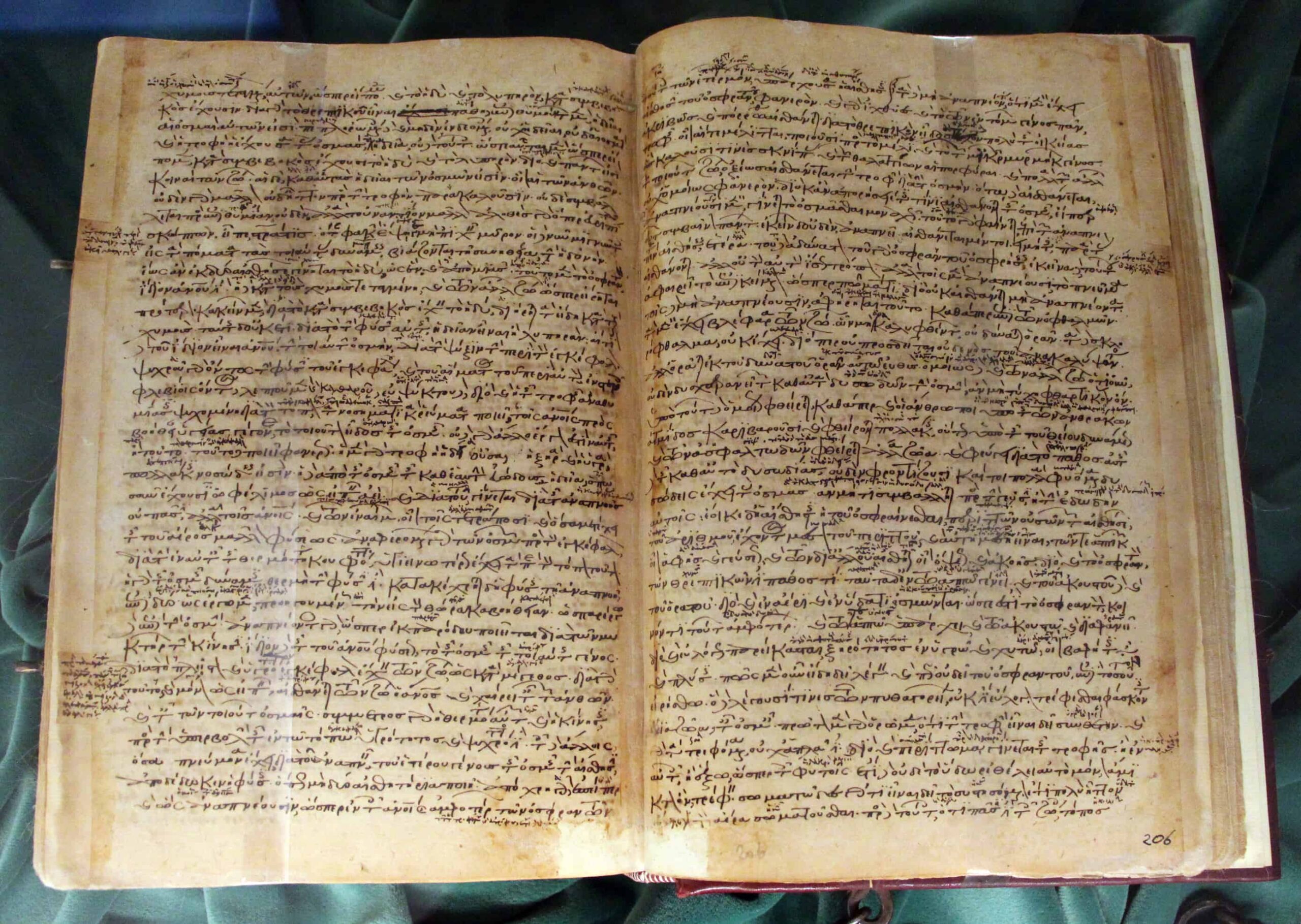
Animalium, one of the biology books of Aristotle.(Image from: wikimedia.org)
Aristotle’s scientific researches had a very holistic view of nature and believed that all lifeforms had a soul. This was due to the dominant philosophical view of Greece during its classical period.
As per this, he viewed:
- Plants to possess a ‘vegetative soul,’ which conferred the gift of reproduction and growth,
- while animals possessed a ‘sensitive soul,’ that granted them movement and senses.
- Only human beings were said to possess a ‘rational soul,’ which gave humanity the ability to reason and reflect.
Thus we can say that Aristotle did not attempt to separate the empirical research from philosophy and spirituality, a unity that continued until the age of enlightenment.
Aristotle’s treatises contributing to biology
- The Parts of Animals
- The History of Animals
- The Movement of Animals
- The Progression of Animals
- On the Generation of Animal
- On Life and Death
- On Respiration
- On Breath
- On Plants
- On Sense and Sensible Objects
- On Memory and Recollection
- On Length and Shortness of Life
- On Youth and Old Age
- On Sleep and Waking
- On Dreams
- Of Prophecy in Sleep
Aristotle’s biological science is important not only because it gives us a view into the history and philosophy of science, but also because it allows us to understand his works outside biology better as well.
This is so because certain key concepts from Aristotle’s biology repeat themselves in his other writings such as his work on metaphysics.
Since a significant portion of Aristotle’s work is on biology, thus, it is expected for his work in biology to resonate in his other writings.
Aristotle’s theory of forms
Aristotle’s philosophy and study of biology is constructed on the basis of his theory of form, which is derived from Plato’s theory of Forms but is significantly different.
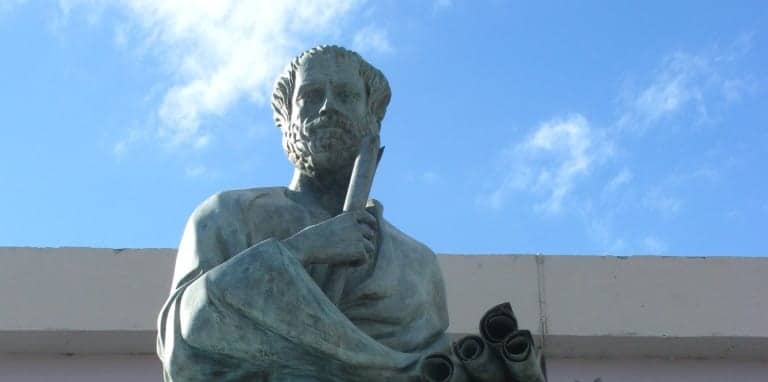
Aristotle’s theory of forms centres on forms being intrinsically linked to objects.
These forms have a substantial form that is unchangeable and an accidental form which is changeable.
Furthermore, he believed that forms can be subject to change, growth, decay, and extinction.
Plato’s Forms were eternal and fixed described as “blueprints in the mind of God”.
According to Plato, real things in the world could at best be approximations to these perfect Forms.
His rejection of Plato’s theory of forms centred on the relationship between form and object. He was also of the view that Plato’s theory could not adequately explain three notions.
These notions that he criticized are as follows:
- Forms cannot explain changes or the extinction of things.
- Forms do not explain knowledge of things.
- Forms do not explain the existence of a thing.
Aristotle analyzed this philosophy and developed it into a set of his three biological concepts.
He used the word, “eidos” to refer to all the set of visible features that uniquely characterized a kind of animal; “génos” to mean a kind or type. For instance, birds are animals that have feathers, beak, wings, a lay hard-shelled egg.
Aristotle further noted that there are many bird forms within the “bird kind” such as cranes, eagles, crows, bustards, sparrows, etc. Just like there are several different forms of fishes within the fish kind.
He at times referred to it as “atomic eidē” meaning indivisible forms. Human is one of these indivisible forms: we all are different individually, but we all come under the humankind.
Finally, Aristotle observed that the child does not take just any form, but the combination of what they derive from their parents at the time of conception.
Aristotle further emphasized the informational nature of form by arguing that a body a compound of elements like earth and water just like a word is a compound of several different letters.
Aristotle and the theory of Epigenesis
To understand the order of the developing organs of a growing embryo, Aristotle dissected bird’s eggs at various stages of its development. He observed that the heart developed before any other organs in the embryo.
This fuelled his theory of Epigenesis, where he propounded that the organs developed in a specific order and that the important organs develop first.
Though here he mistook the spinal cord for the heart as there was no microscope then. However, his idea of a strict order to development was correct.
Aristotle first published this theory in his book “On the Generation of Animals.”
Aristotle and his system of classification
Aristotle developed the first system of classification of animals. It included systematic observation and study of a wide range of animals, where he noted the similarities between the specimen under study while trying to classify animals into groups based on their similarities.
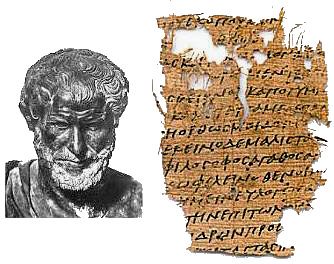
Aristotle’s classification of species is the first known attempt to classify animals into groups according to their behaviour and the similarities and differences between their physiologies using observation and dissection.
On the basis of physical characteristics, he divided animals into two broad groups. Then he further classified them under five genera per group and also classified species within each genus.
Aristotle’s two major groups of animals were dependent on whether or not they have “red blood.”
He did not classify plants or fungi, but his classification of animals is as follows:
- Blooded (vertebrates)
- Viviparous quadrupeds (land mammals)
- Birds
- Oviparous quadrupeds (reptiles and amphibians)
- Fish
- Cetaceans (Aristotle did not realize their mammalian nature)
- Bloodless (invertebrates)
- Land arthropods (insects, arachnids, myriapods)
- Aquatic arthropods (mostly crustaceans)
- Shelled animals (shelled mollusks, echinoderms, etc.)
- Soft animals (cephalopods, etc.)
- Plant-animals (cnidarians, etc., which superficially resemble plants)
In his book ‘History of Animals,‘ Aristotle looked into the physiology of animals, compared and differentiated their organs and their specific functions.
He noted how the same organs were a little different in different animals and documented how the same organs possessed completely different functions.
He theorised that this difference existed due to the diverse lifestyle and the habitat of the species, pointing out how organs differ according to whether the animal lives on land or water, whether they fly, swim, or walk, and whether the animal breathes air or not.
Aristotle’s research in the field of zoology also made distinctions between the habits of animals, pointing out that there were animals who ate only flash while there were others that ate only plants. And there were also animals that ate both.
Aristotle’s theory of “scala naturae”
Aristotle developed the idea of Scala Naturae, which can also be translated as “Natural Ladder“. He utilized this concept to organise all things in the natural environment under living and non-living.
His Scala Naturae or ladder of life showed a continuum from “lower” forms of matter to “higher” forms of matter. Everything has a place on the ladder, and species cannot switch places i.e species are immutable.
This ladder ranged from inanimate matter such as minerals and classification them as the “lowest,” and up to plants and animals. The “highest” things on the ladder are humans.
Aristotle ranked humans above all else because they alone possess the ability of rational thinking.
Humans and animals can both move, but plants and minerals cannot. Humans, animals, and plants can all grow and reproduce, but minerals cannot.
Thus based on this analogy he placed things on the ladder from lower order to higher order.

Conclusion
Aristotle is thus recognized as the founder of the scientific study of life (i.e. Biology and Zoology) despite the fact that many Greek natural philosophers have speculated and commented on the origins of living things.
For example, the Hippocratic medical corpus, which accounts for the findings in the branch of human anatomy, physiology, and pathology. Plato, his mentor, as well had worked in the field.
Though unlike them, Aristotle considered the investigation of living things, and especially animals, central to the theoretical study of nature.
He took up an empirical approach to carry out his research. He thus wrote several books trying to systematically study and record his findings of means by which animal reproduce; general principles of animal locomotion; he also attempted to explain as to why some animals are footless while others are bipeds or quadrupeds, and why all have an even number of feet if they have feet at all.
Along with this, he also studied the anatomy and physiology of animals and outlined some scientific understanding of the parts of animals and whether those parts were designed or arose by chance.
Due to this empirical and critical approach, he is hence regarded as the father of biology as well as zoology for initiating the temper of the systematic experiment, research, and critical analysis in the field of science.
